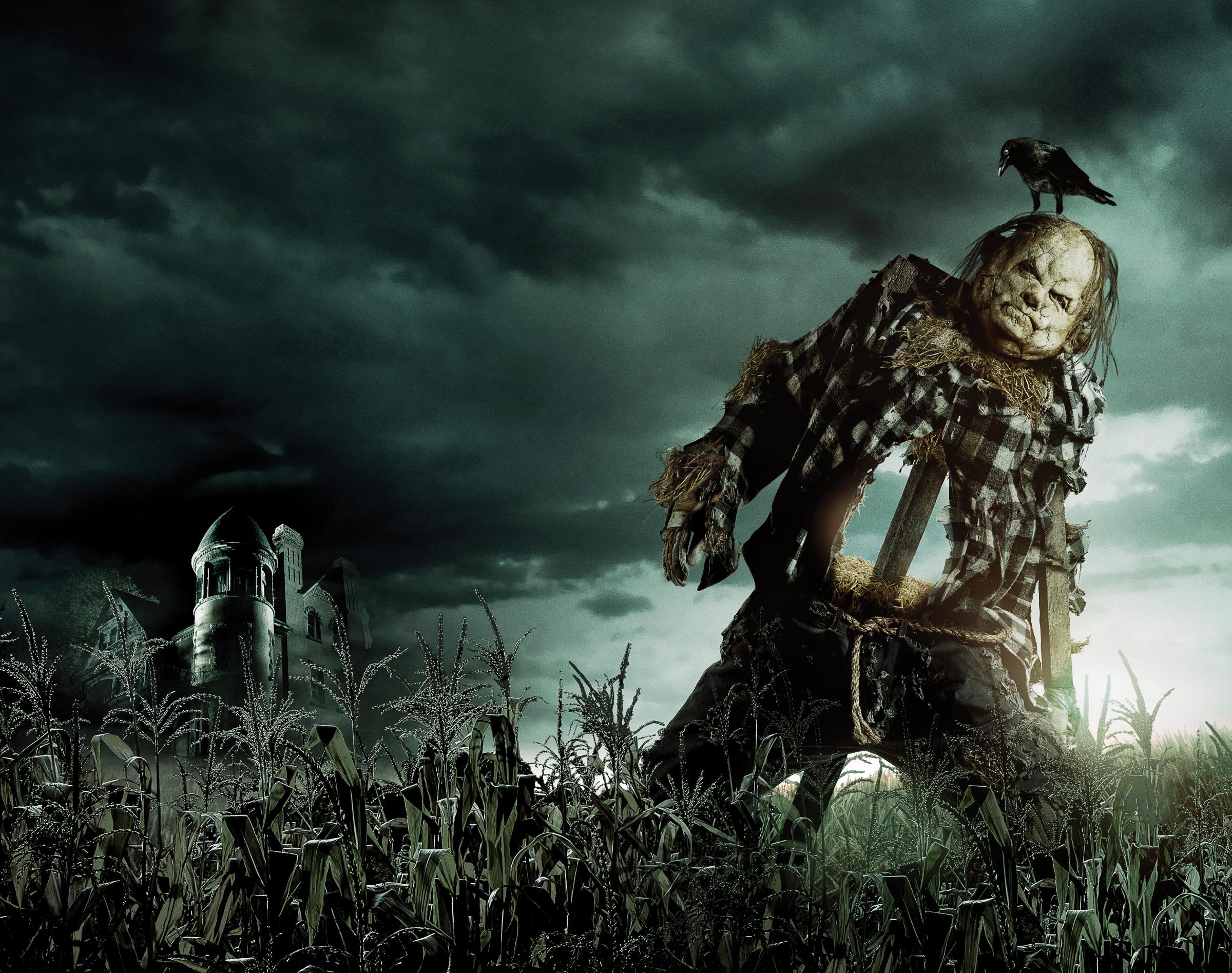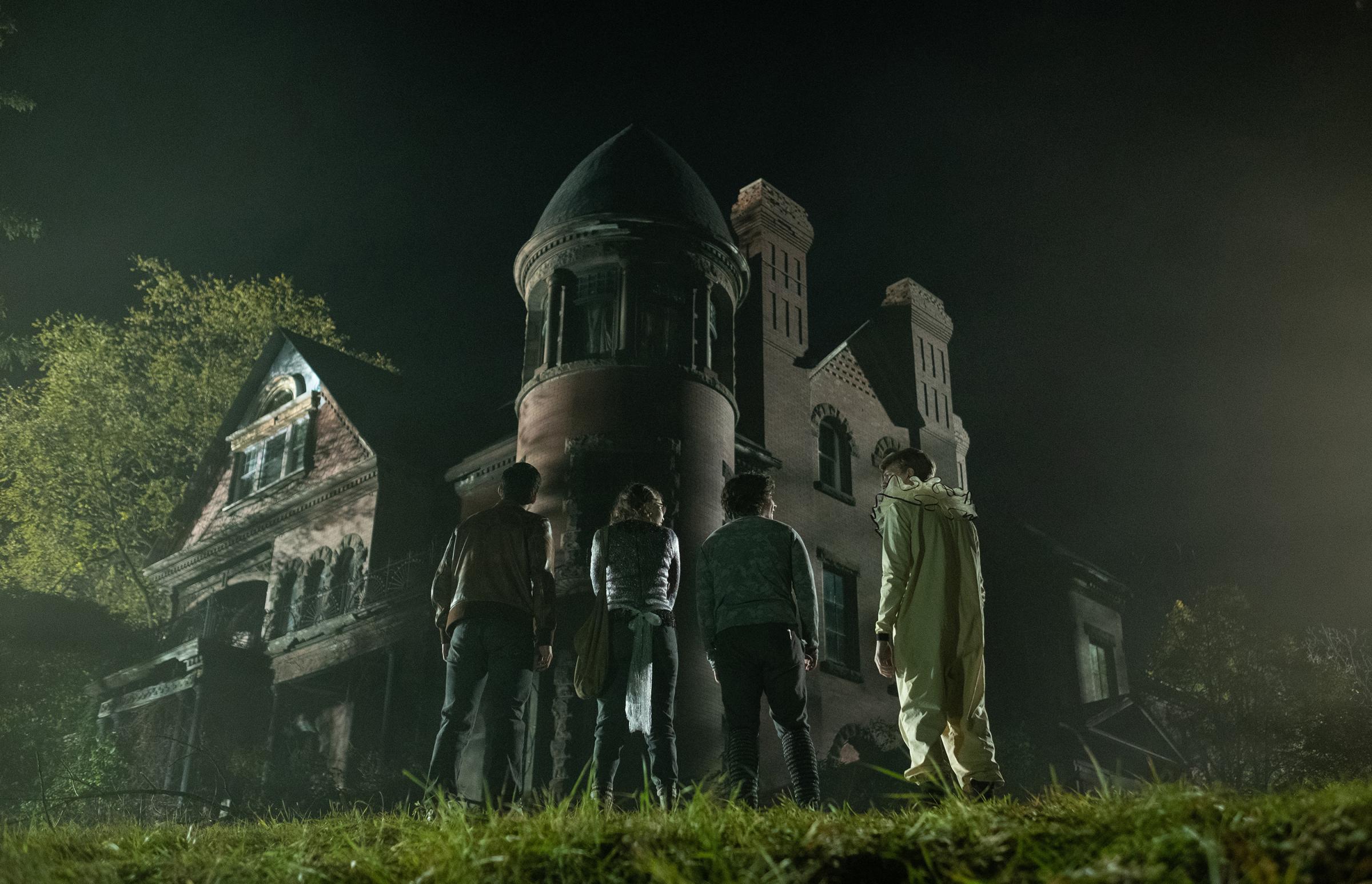Warning: This post contains spoilers for Scary Stories to Tell in the Dark.
If you grew up in the ’80s or ’90s, there’s a good chance you’ve heard of Scary Stories to Tell in the Dark, even if you haven’t read it. The three-part collection of haunting short stories, featuring illustrations known for terrifying the bravest of young readers, has been a literary staple of many childhoods. And now, it’s a movie, in theaters Aug. 9, adapted by director André Øvredal and producer Guillermo del Toro.
But while the original series — written by Alvin Schwartz and illustrated by Stephen Gammell — has been traumatizing kids for decades, the movie adaptation leaves a scare factor to be desired. Maybe it’s the fact that the generation that originally devoured this nightmare fuel is now fully grown and not as affected by ghost stories. Maybe it’s that the movie is targeted toward a young audience and its filmmakers don’t want to inflict permanent trauma. But the most likely reason seems to be that our own imaginations often conjure up much more frightening imagery than anything that could be depicted on a screen.
That’s not to say that the movie won’t scare younger viewers who have never read the three Scary Stories books: Scary Stories to Tell in the Dark (1981), More Scary Stories to Tell in the Dark (1984) and Scary Stories 3: More Tales to Chill Your Bones (1991). The three Scary Stories books are comprised of folk tales and urban legends retold by Schwartz. In the books, many of these stories end on a cliffhanger, leaving readers to decide on their own what horrors befall the characters after the words on the page stop. The film, on the other hand, unites six of the original stories within an overarching plot that ends on a somewhat resolved note.
In the movie, teenage protagonist Stella (Zoe Margaret Colletti) steals the haunted notebook of the long-dead Sarah Bellows (Kathleen Pollard) — a young girl who, according to town legend, turned her tortured life into a series of scary stories — from the basement of the Bellows’ old mansion on Halloween night. After that, everyone who was in the house with her begins to disappear, but not before a horrifying story detailing their final moments appears on the book’s pages scrawled in blood. Stella and her friends must then race against a ticking clock to find a way to end Sarah’s rampage of revenge.
To understand why the adaptation doesn’t deliver scares quite like its terrifying source material, let’s break down how the six stories featured in the movie differ from their counterparts in the Scary Stories to Tell in the Dark books.
“Harold”

The story of Harold is widely considered a standout amongst Scary Stories fans — and for good reason. Who could forget the tale of the scarecrow who comes to life and psychologically torments the two farmers who created him before killing one of them and stretching out his “bloody skin to dry in the sun”?
In the movie, Harold is still a scarecrow that’s used as a punching bag by his owners — mainly, their teenage son Tommy (Austin Abrams). Considering Tommy is the town bully and this is a horror movie, it’s no surprise that he becomes the first person to fall victim to Sarah Bellows’ book. But while Harold spends some time stalking Tommy around a corn field after his mother sends him to deliver eggs to their neighbors, the lead-up to Harold’s attack is tepid compared to the scene in the book in which he climbs up on the roof of the farmers’ hut and trots “back and forth like a horse on its hind legs” for an entire day and night.
Harold’s movie storyline ends with him stabbing Tommy with a pitchfork that transforms Tommy into a scarecrow. A frightening conclusion for sure, but not quite so terrifying as a once-inanimate doll skinning someone alive.
“The Big Toe”
The premise of the “Big Toe” is simple. A boy finds a toe sticking out of the dirt in his family’s garden and brings it inside to his parents. His mom then cooks the toe in a soup before his dad cuts it into three pieces and they all eat one. Unfortunately for them, that night, the corpse to which the toe was attached comes to reclaim its missing digit. While lying in bed, the boy hears a voice calling out for the toe that keeps getting closer and closer. The story ends with the corpse standing next to the boy’s bed, screaming, “YOU’VE GOT IT!”
We never find out what the corpse does to the boy to get its toe back, which is somehow all the more horrifying than seeing what happens to Auggie (Gabriel Rush) in the movie. As Stella and Ramón (Michael Garza) desperately try to warn Auggie what’s coming for him, he dines on a stew he thinks his mom made before going out of town for the weekend. Of course, it ends up being stew à la toe and it’s not long afterward that the corpse shows up.
The decomposing body follows Auggie to his room and opens the door as he shuts his eyes in terror under his bed. When he opens them and doesn’t see anyone in the room, he works up the courage to try to crawl out. It’s then that the corpse — which has somehow gotten under the bed without him noticing — grabs his legs and drags him into a dark abyss in the wall that disappears as soon as he does. When Sarah and Ramón show up, the only evidence they can find of Auggie’s abduction is his fingernail marks on the floor under the bed.
“The Red Spot”

Of all the stories included in the Scary Stories to Tell in the Dark movie, “The Red Spot” is the one that stays the truest to its source material. In both versions, a spider bites a girl named Ruth (Natalie Ganzhorn, in the movie) on the cheek and a red bump begins to form. As the days go by, the bump grows larger and more painful until it bursts open, creating a gash in her cheek from which a swarm of baby spiders spills out. The only difference is that, in the movie, Ruth’s brother Chuck (Austin Zajur) dumps a bucket of water on her to get the spiders off. Unfortunately, Ruth is still so traumatized by the experience that she ends up in the town’s insane asylum.
In the books, this story was only about a half-page long. But the gruesome accompanying image showcasing the cavernous hole in Ruth’s cheek was enough to give anyone a serious case of the heebie-jeebies.
“The Dream”

Although the movie’s take on “The Dream” brings Gammell’s haunting depiction of the “Pale Lady” from Scary Stories 3 to life, her slow stalking of Chuck through the hospital corridors somehow doesn’t chill the blood as much as the moment when she appears in Lexi Morgan’s doorway in the books. Especially when all she ultimately does to Chuck is…hug him until he disappears inside her?
And while Chuck, like Lexi, dreams about the Pale Lady before he sees her in real life, we never get to hear her deliver her one hair-raising line from the books: “This is an evil place, run away while you still can.”
“The Jangly Man”
While there’s no creature called the Jangly Man mentioned in the Scary Stories books, Del Toro revealed prior to the movie’s release that his newest monster was an amalgamation of a few of Gammell’s illustrations. A Los Angeles Times feature from Comic-Con 2019 described the Jangly Man as “a decomposing corpse that is very much alive, the Jangly Man has a lopsided face with a menacing expression, including two sets of teeth in one smiling mouth. At times he has six appendages, and delivers frights while both standing upright and crawling backwards.”
When the Jangly Man is introduced in the movie — right as Chief Turner (Gil Bellows) is figuring out that Stella and Ramón are telling the truth about Sarah Bellows’ book — it becomes clear that one of his inspirations was “Me Tie Dough-Ty Walker,” a story in which a bloody head falls down the chimney of a haunted house and scares a boy’s dog to death.
The Jangly Man’s ability to contort his body, run backwards at high speeds and tear himself apart limb by limb makes for one of the scarier features of the movie.
“The Haunted House”

Like the Jangly Man, Sarah Bellows is not a character in the Scary Stories books. However, her appearance seems to be based on Gammell’s illustration of “the haunt” in the story “The Haunted House.”
And just like the haunt in the story, Sarah’s ghost inhabits the basement of a house after being wronged by those closest to her. “It was a young woman about twenty years old. Her hair was torn and tangled, and the flesh was dropping off her face so he could see the bones and part of her teeth,” the description of the haunt reads. “She had no eyeballs, but there was a sort of blue light way back in her eye sockets. And she had no nose to her face.”
But while the haunt was murdered by her lover for her money, Sarah was tortured and killed by her family for threatening to reveal the truth about how their mill was poisoning the townspeople. In the movie, Stella is transported back in time and mistaken for Sarah by the Bellows, who drag her down to a locked room in the basement. It’s there that she encounters the real Sarah and manages to convince her to stop terrorizing her and her friends in exchange for telling the world the truth about her life.
Stella and Ramón are saved, Ruth is released from the asylum and everything goes back to normal in Mill Valley. It’s a pretty tidy resolution — save for the important caveat that Auggie and Chuck are still missing — and seems like it’s meant to leave viewers with an overall sense of hope. Not many readers could say the same for the books.
More Must-Reads from TIME
- Donald Trump Is TIME's 2024 Person of the Year
- Why We Chose Trump as Person of the Year
- Is Intermittent Fasting Good or Bad for You?
- The 100 Must-Read Books of 2024
- The 20 Best Christmas TV Episodes
- Column: If Optimism Feels Ridiculous Now, Try Hope
- The Future of Climate Action Is Trade Policy
- Merle Bombardieri Is Helping People Make the Baby Decision
Write to Megan McCluskey at megan.mccluskey@time.com